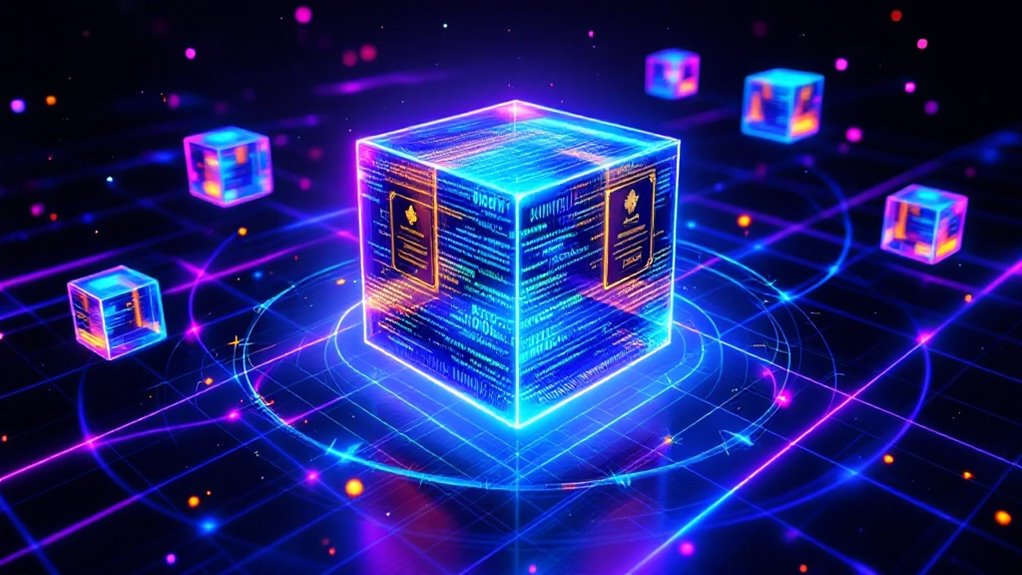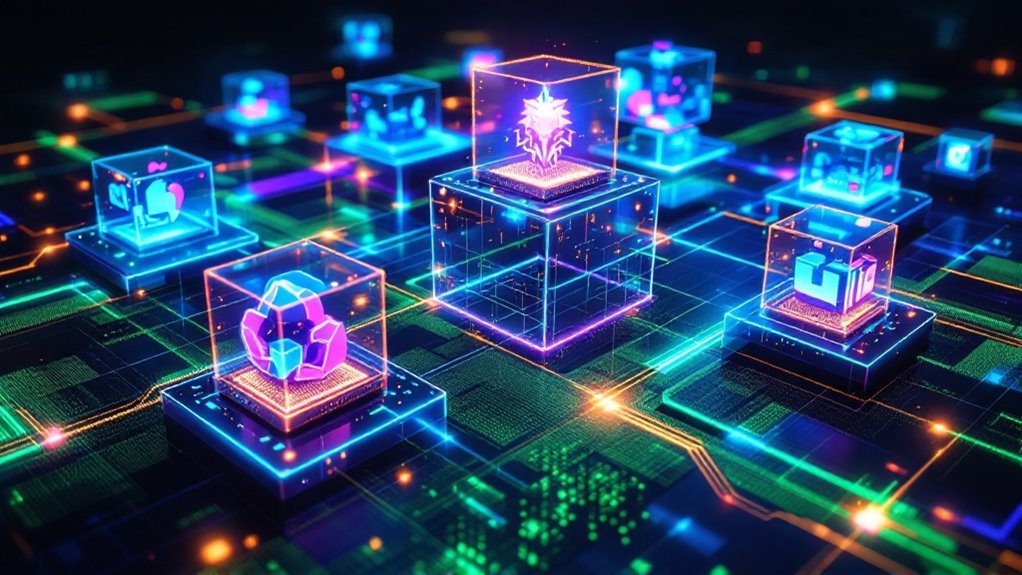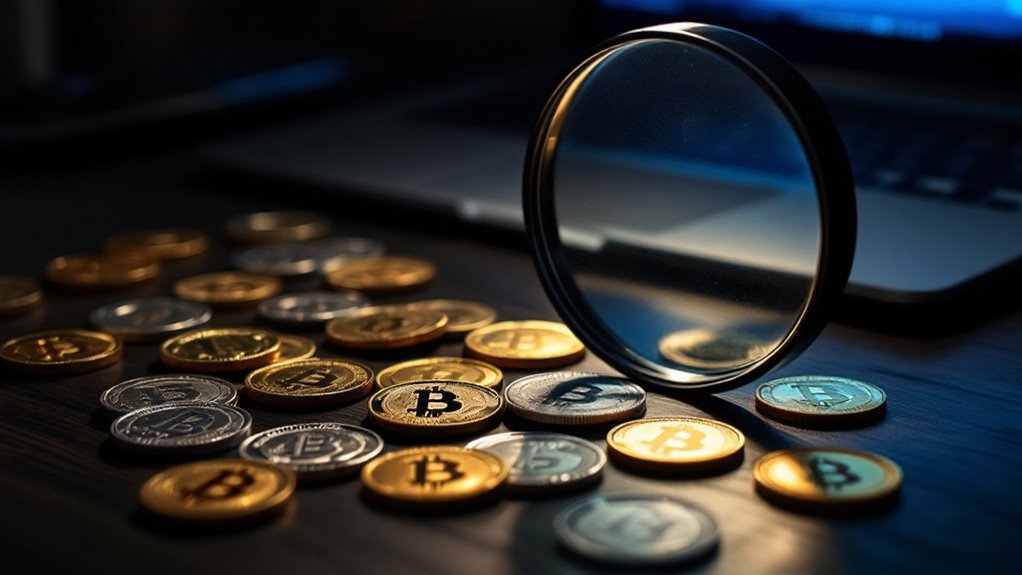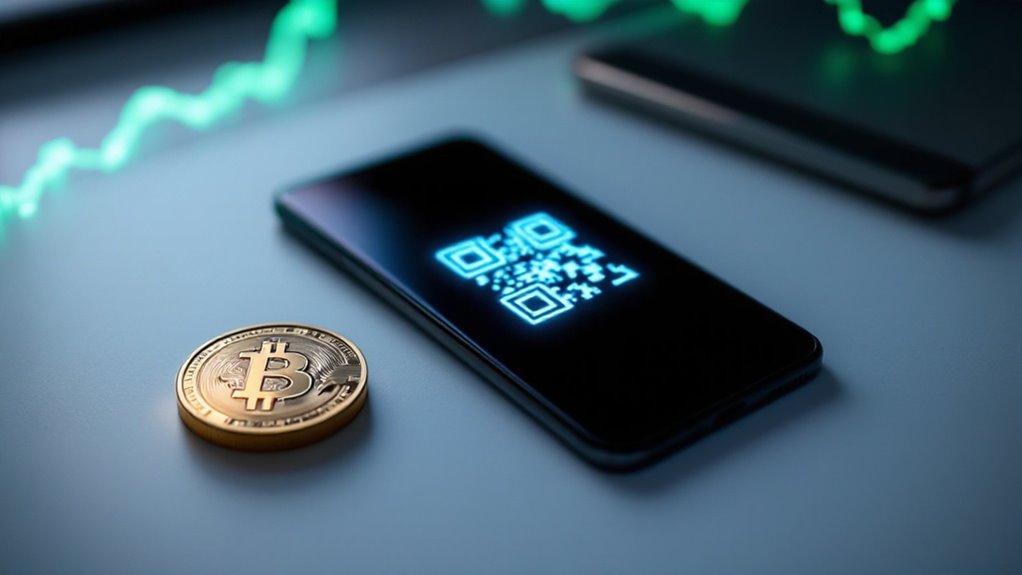NFTs function as unique digital certificates of ownership, recorded permanently on blockchain technology like Ethereum. Similar to collecting rare baseball cards, these tokens represent one-of-a-kind digital assets – from artwork to virtual real estate. Smart contracts generate distinct identifiers and metadata for each NFT, while marketplaces like OpenSea facilitate buying and selling. Though anyone can copy a digital file, only one person holds the verified original token. This fascinating intersection of scarcity and abundance opens up endless possibilities.

The digital revolution has birthed a curious new form of ownership – the NFT, or non-fungible token. Like digital fingerprints etched in virtual stone, these blockchain-based assets transform ephemeral pixels into unique, tradeable properties. The process begins when creators upload their digital works to specialized marketplaces like OpenSea or Rarible, where complex algorithms mint them into distinctive tokens on networks like Ethereum.
Behind the scenes, a intricate dance of technology unfolds. Smart contracts spring to life, generating unique identifiers and metadata that become permanently recorded on a distributed public ledger. Think of it as a digital notary service that never sleeps, documenting every transfer of ownership with unflinching precision. The underlying files often find homes on IPFS, a decentralized storage system that guarantees the artwork remains accessible even if individual servers fail. The ERC-721 standard governs how these tokens operate, ensuring consistent ownership transfer and transaction verification across platforms. Creators must pay gas fees to deploy their NFT collections on the blockchain.
What makes NFTs particularly fascinating is their ability to represent virtually anything digital – from striking digital paintings to virtual real estate in metaverse worlds. Creators can even program ongoing royalties into their NFTs, guaranteeing they benefit from future sales. Yet ownership of an NFT doesn't necessarily mean owning the copyright, much like purchasing a physical print doesn't grant rights to reproduce the artwork. The public record ensures transparent tracking of every NFT transaction on the blockchain.
The value of NFTs flows from a peculiar alchemy of scarcity and desire. While digital files can be copied endlessly, blockchain technology guarantees only one person can truly own the original token. This artificial scarcity, combined with social status and collector enthusiasm, drives prices in unexpected directions. Some NFTs sell for millions while identical copies circulate freely online – a paradox that both defenders and critics love to debate.
Beyond the world of digital art, NFTs are quietly revolutionizing other sectors. Concert tickets, academic credentials, and even virtual sneakers are being tokenized. Gaming companies are creating persistent digital items that players truly own and can trade across virtual worlds.
As the technology matures, the line between digital and physical ownership continues to blur, painting an intriguing picture of our increasingly virtual future.
Frequently Asked Questions
Can NFTS Be Stolen or Hacked From My Digital Wallet?
Yes, NFTs can be stolen through various methods including phishing attacks, malware, compromised private keys, and smart contract vulnerabilities. Using hardware wallets and following security best practices reduces theft risks markedly.
What Happens to My NFT if the Hosting Platform Shuts Down?
If a hosting platform shuts down, NFT ownership remains on the blockchain, but artwork access may be lost if stored on centralized servers. Using decentralized storage like IPFS helps mitigate this platform dependency risk.
Do NFTS Have Any Real-World Applications Beyond Digital Art?
NFTs extend beyond digital art into real estate tokenization, gaming assets, supply chain authentication, and identity management. These applications enable ownership verification, transparent transactions, and improved efficiency across various industries.
How Do NFT Gas Fees Work and Why Are They Necessary?
NFT gas fees compensate blockchain validators for processing transactions and maintaining network security. These fees, calculated using gas limits and base fees, fluctuate based on network congestion and computational complexity.
What's the Environmental Impact of Minting and Trading NFTS?
NFT minting and trading have significant environmental impacts, consuming substantial energy and producing around 200kg CO2 per transaction. However, newer blockchain technologies and Proof-of-Stake systems are reducing these environmental concerns considerably.









